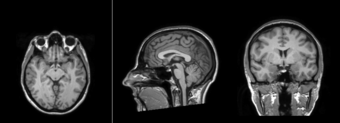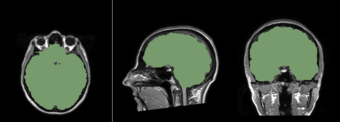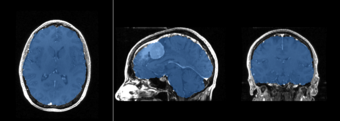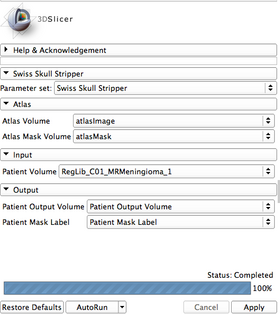Difference between revisions of "Documentation/Nightly/Modules/SwissSkullStripper"
| Line 34: | Line 34: | ||
* [https://github.com/lorensen/SwissSkullStripperExtension/raw/master/SwissSkullStripper/Data/Input/atlasImage.mha Download the atlas image] | * [https://github.com/lorensen/SwissSkullStripperExtension/raw/master/SwissSkullStripper/Data/Input/atlasImage.mha Download the atlas image] | ||
* [https://github.com/lorensen/SwissSkullStripperExtension/raw/master/SwissSkullStripper/Data/Input/atlasMask.mha Download the atlas brain mask] | * [https://github.com/lorensen/SwissSkullStripperExtension/raw/master/SwissSkullStripper/Data/Input/atlasMask.mha Download the atlas brain mask] | ||
| − | * Load the two image and mask files into Slicer using menu ''File'' / ''Add data'' or by drag-and-dropping the files to the application window. '''Important: in ''Add data | + | * Load the two image and mask files into Slicer using menu ''File'' / ''Add data'' or by drag-and-dropping the files to the application window. |
| + | ** '''Important: in ''Add data'' dialog, click ''Show options'' and make sure ''Labelmap'' checkbox is checked for the mask''' (if this step is missed then the mask volume will not appear in the atlas mask volume selector) | ||
Users can also provide their own atlas image and brain mask. | Users can also provide their own atlas image and brain mask. | ||
Revision as of 12:35, 16 July 2019
Home < Documentation < Nightly < Modules < SwissSkullStripper
|
For the latest Slicer documentation, visit the read-the-docs. |
Introduction and Acknowledgements
|
Extension: SwissSkullStripper |
Module Description
A skull-stripping module that registers an atlas image to the patient data. An atlas brain mask is propagated to the patient data. This brain mask is eroded and then serves as initialization for a refined brain extraction based on level-sets. The level-set is evolved towards the edge of the brain-skull border with dedicated expansion, curvature and advection terms.
The module produces a brain mask for the patient data as well as the patient data with the mask applied.
For the atlas, a customized isotropic T1-weighted MR image and a manually generated brain mask are available for download.
- Download the atlas image
- Download the atlas brain mask
- Load the two image and mask files into Slicer using menu File / Add data or by drag-and-dropping the files to the application window.
- Important: in Add data dialog, click Show options and make sure Labelmap checkbox is checked for the mask (if this step is missed then the mask volume will not appear in the atlas mask volume selector)
Users can also provide their own atlas image and brain mask.
Use Cases
Tutorials
Panels and their use
The user provides three input volumes:
- An atlas image volume. Use your own, or download one.
- An atlas brain mask volume, Use your own, or download one.
- A patient volume. Use your own, or download one.
The module produces:
- A patient volume that resides within the patient mask
- A patient brain mask volume
The process takes about 2 minutes for most datasets.
Similar Modules
References
- Bauer S., Fejes T., Reyes M., "A Skull-Stripping Filter for ITK", Insight Journal, January-December, 2012
Information for Developers
Source code for the extension is located here.
A version of the module that can be used outside Slicer4 as an ITK remote module is located here.
| Section under construction. |



